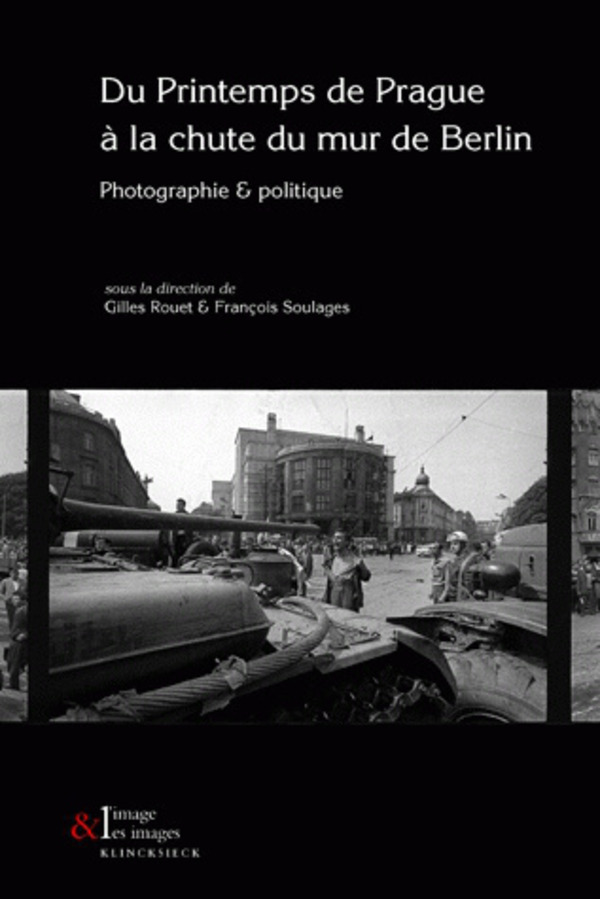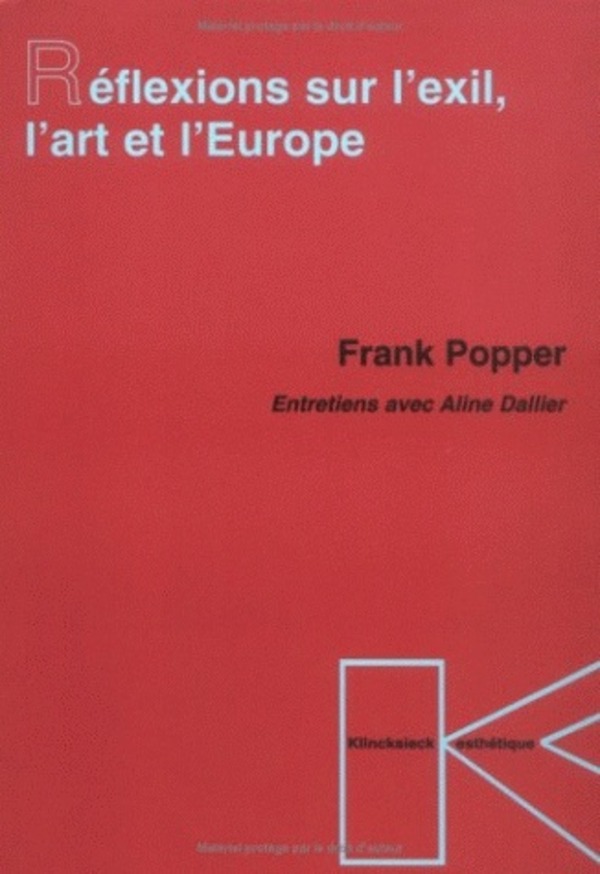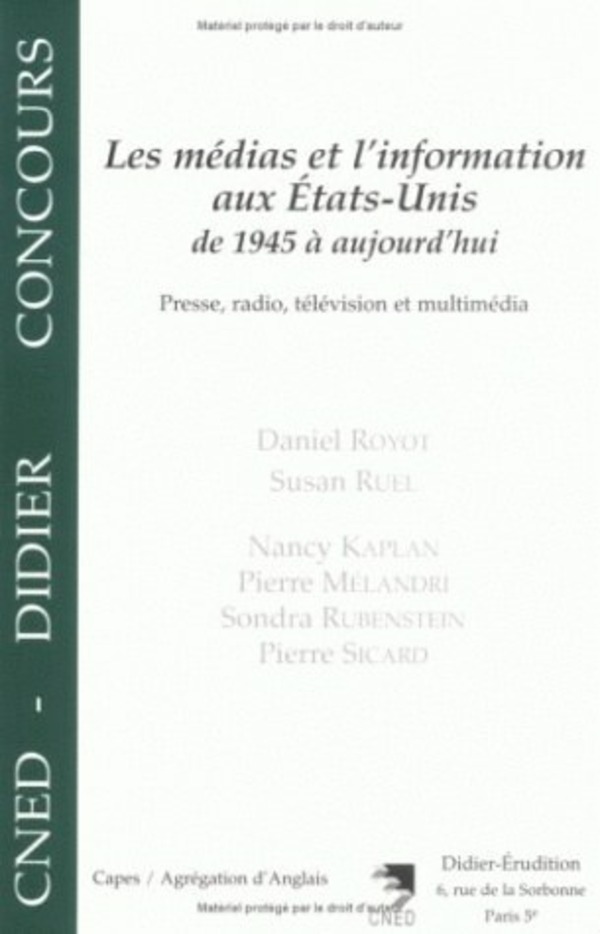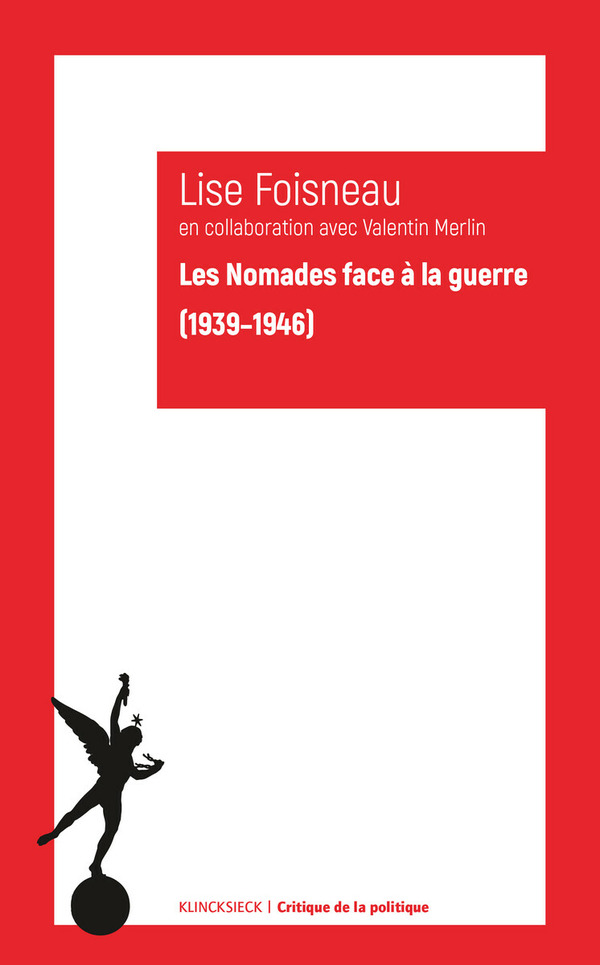Études anglaises - N°3/2013
Medieval objects
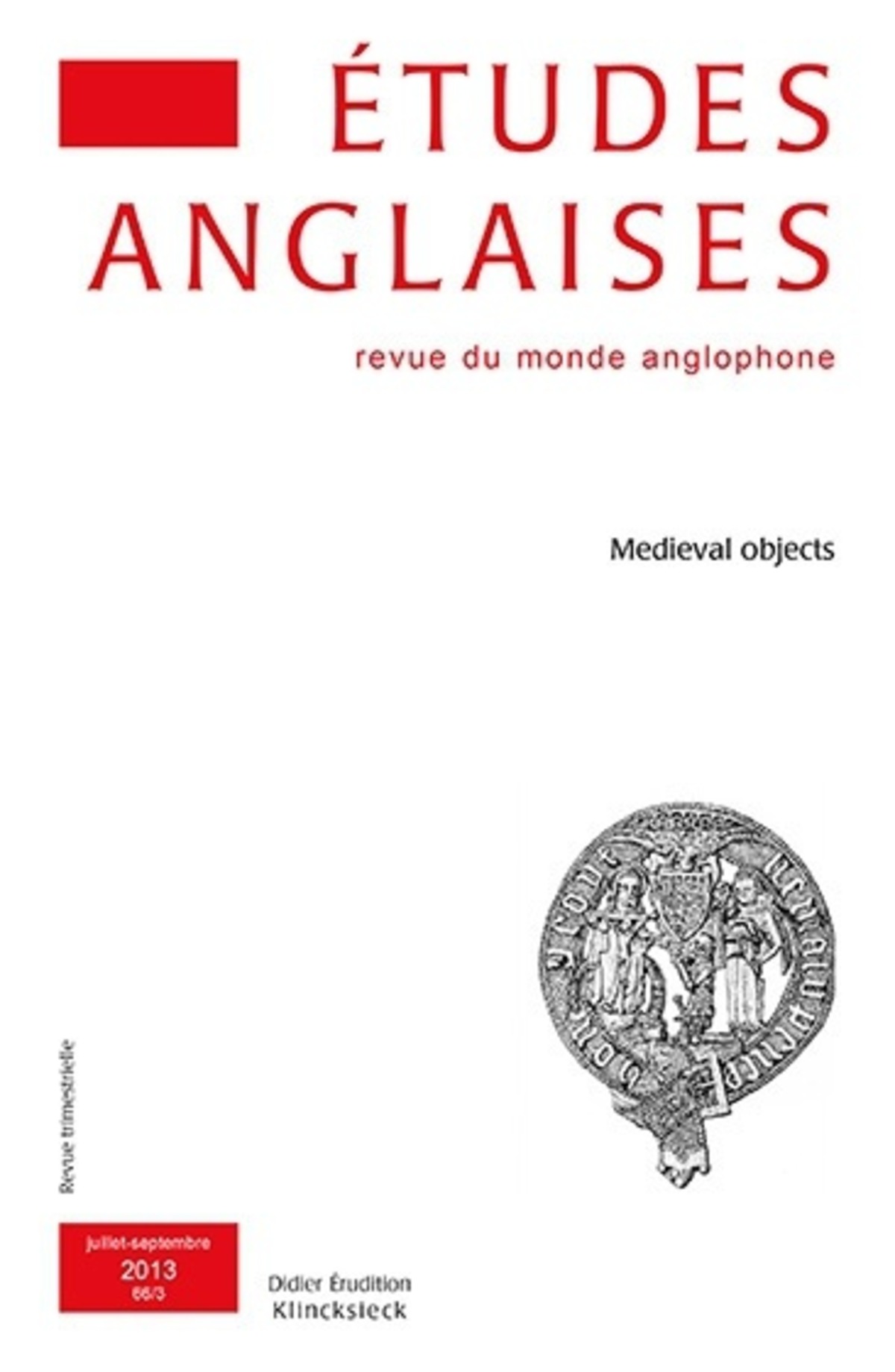
- 128 pages
- Bibliographie
- Livre broché
- 15 x 23 cm
- Études anglaises
- Parution : 07/11/2013
- CLIL : 3146
- EAN13 : 9782252038901
- Code distributeur : 45859
Présentation
Stephanie A. Viereck Gibbs KAMATH : A cruel spoon in context: cutlery and conviviality in late medieval literature
Indebted to Derek Brewer's "honor-group" theory, this essay explores how ideas of community and individuality found expression through depictions of spoon use in late medieval English and French texts. Guillaume de Digulleville's Pèlerinage de vie humaine employs a spoon to represent the dissolution of monastic communal ideals, an implement described as a cruel spoon of singularity in John Lydgate's fifteenth-century translation. Exploring Geoffrey Chaucer's spoon references uncovers a discourse on social unity and its challenges; it seems no coincidence that the Canterbury Tales pilgrims who mention desirable, costly spoons are the singular figures of the Pardoner and Alison of Bath.
Cet article, à partir des « groupes d'honneur » définis par Derek Brewer, examine comment, dans la littérature française et anglaise de la fin du Moyen Âge, l'usage de la cuillère articule les notions de communauté et d'individualisme. La cuillère, dans le Pèlerinage de vie humaine de Guillaume de Digulleville, représente la dissolution de la communauté monastique idéale — ce que Lydgate traduit en 1426 par une « cruelle cuillère », en raison de sa « singularité ». Chez Chaucer, les cuillères menacent la cohésion sociale : les deux pèlerins des Contes de Canterbury qui mentionnent ces coûteux et désirables objets sont le Vendeur d'indulgences et Alison de Bath, deux champions de l'individualisme.
Emily STEINER : Piers Plowman and institutional poetry
William Langland's Piers Plowman wields a reformist agenda while experimenting with religious verse. Wit's (allegorical) castle of the soul echoes Sir Gawain and the Green Knight and Digulleville's Pèlerinage de vie humaine. Together with St. Truth's elaborate shrine/penitential castle, whose keys are reminiscent of romance rapes, and the barn of Unity/Church, these buildings demonstrate Langland's deep attachment to institutions. Similarly, Langland shows Digullevillian taste for the handling and transcribing of legal documents. The English fifteenth-century craze for the Pèlerinages may well have been triggered by Piers Plowman, which was their natural conduit.
Dans Piers Plowman, William Langland se veut réformiste, mais surtout il invente une poétique religieuse. Le château (allégorique) de l'âme de « Wit » renvoie à Gauvain et le chevalier vert et au Pèlerinage de vie humaine de Digulleville. Ainsi que le château/sanctuaire pénitentiel de sainte Vérité, dont les clés rappellent les pénétrations des romans de chevalerie, ou la grange d'Unité/Église, ces bâtiments montrent l'attachement viscéral de Langland aux institutions. De même, Langland fait preuve d'un goût digullevillien pour les documents juridiques, qu'il retranscrit tandis que ses personnages les manipulent : en Angleterre, la lecture intensive des Pèlerinages au XVe siècle s'est faite à travers le prisme et sous l'influence de Piers Plowman.
Sarah NOVAK : Braying peasants and the poet as prophet: Gower and the people in the Vox clamantis
Gower's public writings target the "common people," whom the Ricardian poet hopes to reform while embodying its very voice. In the Vox clamantis II-VII, Gower's poetic persona is that of a strident reformist, who records the complaints of the vox populi “in general.” In the allegorical vision of the 1381 upheaval (Book I), Gower adopts a different prophetic mode. As he foresees the labourers' rebellion, the peasants morph into wild animals, London turns into a wasteland, a new Troy. The peasants' voices become mere animal grunts, and the voiceless rebels are excluded from the “common people,” for whom Gower normally writes.
Gower, écrivain public, s'adresse au « peuple tout entier », qu'il espère réformer tout en lui empruntant sa voix. Dans Vox clamantis II-VII, Gower parle en réformiste acharné, qui retranscrit les lamentation de la vox populi dans son ensemble. Au livre I, vision allégorique des troubles de 1381, Gower adopte un mode prophétique modifié. Il prétend annoncer la rebellion ; les paysans sont métamorphosés en animaux sauvages ; Londres n'est plus qu'un champ de ruines, une nouvelle Troie. Les paysans émettent des grognements bestiaux : ces rebelles sans voix sont exclus du « peuple tout entier », pour qui Gower se donne mission d'écrire.
Florence BOURGNE : Calling a spade a spade: allegorical tools in the Pilgrimage of the Lyfe of the Manhode and Chaundler's Liber apologeticus
The allegory in Guillaume de Digulleville's Pèlerinages (1330-1358) is known to rely heavily on craftsmen's tools—just as the medieval Sunday Christs extant in English and Alpine wall-paintings. In an illuminated copy of the Pilgrimage of the Lyfe of the Manhode, Labour the mat-maker, whose activity symbolizes the author's industriousness, is given a spade as attribute, thus aligning with Ricardian authors' humility topoi. In Thomas Chaundler's Liber apologeticus (c. 1460), a spade is introduced in the allegorizing scheme, identifying mankind and Adam, but also hinting that the author hopes for “mediocre” perfection, in proto-Renaissance fashion.
On a montré que l'allégorie des Pèlerinages (1330-1358) de Guillaume de Digulleville fait usage des outils d'artisans, tout comme les Christs du dimanche présents dans la peinture murale médiévale de l'Angleterre et de l'arc alpin. Dans un manuscrit enluminé du Pilgrimage of the Lyfe of the Manhode, le nattier Labeur, symbole de l'industrie de l'auteur, se voit attribuer une bêche, qui prolonge les topoï d'humilité de la littérature ricardienne. Dans le Liber apologeticus de Thomas Chaundler (c.1460), une bêche surgit dans le dispositif allégorique, afin d'identifier l'humanité et Adam, mais surtout de signifier que l'auteur, en précurseur de la Renaissance, vise la “médiocrité” parfaite.
Dirk SCHULTZE : Wisdom in the margins: text and paratext in The Seven Points of True Love and Everlasting Wisdom
The only comprehensive Middle English translation of Henry Suso's Horologium sapientiæ has a uniform manuscript tradition, inclusive of paratextual material. This material was supplied early, most probably by the translator, and “marries” the translation to the Latin original, while additional marginal annotations open a space of authority for the translator. This space was meant to safeguard the text from later modifications, and exerted some control over the intended audience's vernacular reception. This hierarchical interplay between margin and text proper and the permanence of a Latin authoritative voice bespeak the Seven Points' locale in a time of religious and translational strife.
La seule traduction moyen-anglaise complète de l'Horologium sapientiæ d'Henry Suso a une tradition manuscrite très homogène, paratextes inclus. Ces paratextes précoces, probablement dus au traducteur, marient intimement la traduction à l'original latin, tandis que les notes marginales ouvrent un espace d'autorité au traducteur. Ces annotations devaient préserver le texte de toute modification ultérieure, et contrôlaient la réception vernaculaire de l'œuvre par son lectorat-cible. Ce jeu hiérarchique entre marge et texte, et la rémanence d'une voix latine faisant autorité, nous renvoient à l'écologie des Seven Points, rédigés durant des dissensions religieuses où la traduction fait débat.
Stephen MORRISON : Mouvance, or the fortunes of a late fifteenth-century sermon cycle
A firmly orthodox late fifteenth-century sermon cycle, extant in seven manuscripts falling into three groups (CUL Gg.6.16; then the more erudite BL Harley 2247 and Royal 18.B.xxv; and finally Oxford, Bodleian Library, e Musaeo 180, Lincoln, Cathedral Library, 50-51, Gloucester, Cathedral Library 22, and Durham, University Library, Cosin V. iv. 3, with the complete cycle in the same hand), exemplifies textual variance as it displays various degrees of unconscious rewording, deliberate rewriting, even massive amplification. Instances of textual corruption confirm manuscript grouping into chronological stages of development, while scribes may have been prompted to deviate from their exemplars by a desire for clarity or didactic concerns.
Un cycle de sermon de la fin du XVe siècle, délibérément anti-Lollard, conservé dans sept manuscrits formant trois groupes (CUL Gg.6.16 ; BL Harley 2247 et Royal 18.B.xxv, plus érudits ; Oxford, Bodleian Library, e Musaeo 180, Lincoln, Cathedral Library, 50-51, Gloucester, Cathedral Library 22 et Durham, University Library, Cosin V. iv. 3, où le cycle est complet, d'une seule main) illustre les théories de la variance. Il présente divers degrés de reformulation spontanée, de réécriture, voire d'amplification. Les occurrences de corruption textuelle permettent de confirmer les groupements de manuscrits, tandis que les scribes ont dévié de leurs exemplars par souci de clarté ou d'efficacité didactique.
Steven ROZENSKI : The Chastising of God's Children from manuscript to print
Possibly the first print by Wynkyn de Worde was the devotional treatise The Chastising of God's Children (c. 1493). Extant manuscripts correct scribal errors carefully, but the incunable introduces many variants. These, as well as the incunable's colophon and title page, show Wynkyn de Worde's Chastising evincing more skepticism about human virtues, and amplifying the distinction between corporeal and non-corporeal revelations in the discernment of spirits. The incunable is concerned with spiritual needs, not with the social approbation of revelatory experience or the suppression of heresy; its critique of images and visions foreshadows future controversy.
Le traité de dévotion The Chastising of God's Children fut probablement le premier ouvrage imprimé par Wynkyn de Worde (1493 ?). Si la tradition manuscrite corrige avec soin les erreurs des copistes, l'incunable introduit de nombreuses variantes. En les analysant ainsi que le colophon et la page de titre de l'incunable, nous découvrons que de Worde scrute avec scepticisme les actions humaines, qu'il développe, dans le discernement des esprits, la distinction entre révélations corporelles et spirituelles. L'incunable répond à une nouvelle attente spirituelle et ne s'attache plus à valider les révélations ou combattre l'hérésie ; sa critique des images et des visions annonce les controverses à venir.
Kevin J. HARTY : Malory and the cowardly Cornish knights—“The strangest races [that] dwell next door”
Malory repeatedly charges Cornish knights with cowardice in Book V of his Morte Darthur, thus conforming to the Roman de Tristan, his principal French source. The Cornish otherness already features as early as Book II. Despite medieval Cornwall's multiple Arthurian associations, Malory's condemnations align with a general derogatory view of at times almost all things Cornish which prevails from the twelfth century onwards. Malory is even aware of the linguistic otherness of the Cornish people, whose rebelliousness continues well into the Early Modern era—and later.
Au livre V de la Morte Darthur, Malory ne cesse de condamner la couardise des chevaliers de Cornouailles, reprenant sa principale source française, le Roman de Tristan. L'altérité cornouaillaise est d'ailleurs introduite dès le Livre II. Négligeant les nombreuses associations de la Cornouailles médiévale à la geste arthurienne, les attaques de Malory s'inscrivent dans un mouvement général de condamnation, attesté dès le XIIe siècle. Malory est par ailleurs sensible aux singularités dialectales du peuple de Cornouailles, qui continuera à se rebeller bien au-delà de la période Tudor.
Biographies Contributeurs
Alexis Tadié
Professeur d'anglais à l'Université Paris 7-Denis Diderot (en 2003) ; Directeur de la Maison française d'Oxford et Fellow de St-Catherine's College à Oxford (en 2005)

